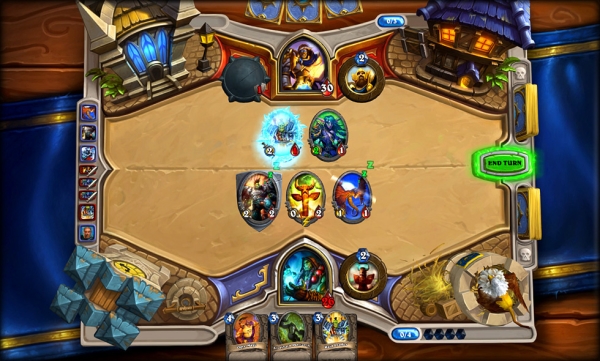There are many companies in recent years have focused more on the personal computer market in the field of gaming, but among these is undoubtedly the name of Blizzard. However, the software company has expansion plans, planning a different future for the real-time category of strategic studying a targeted port that is effective on the mobile devices.
Three Blizzard executives said recently VentureBeat which is a must "make an informed judgment," the introduction of the company in the RTS on the mobile platform market. To be more attractive to mobile users, in fact, the entire category must be redesigned abandoning the standards that have distinguished it in the years of personal computers.
As stated by Frank Pearce, SVP and co-founder of Blizzard, the typical players of the mobile platforms have no intention to play single missions to 45 minutes each, with the genre that should be redesigned in order to be truly usable even on smartphones. The typical simplifications of the mobile licenses also allow to organize smaller teams able to produce more content over time.
This does not translate, according to Blizzard, shrinking the RTS genre by imitating the free-to-play typical and extremely profitable on smartphones: "I think there is still a great opportunity on the mobile as well as casual game," said Mike Morhaime, president and co-founder of the company. "But I'm still not sure that we have found out where lies the opportunity." The arrival of Blizzard in the sector is therefore not so imminent.
But it seems clear that the huge success of Hearthstone has allowed Blizzard to understand the potential of parallel markets to that of personal computers. Hearthstone is among the most profitable titles on iOS and Android, and in recent years Blizzard has shown interest in the console, with the porting Diablo III and release of Overwatch even on platforms other than PC. Activision, Blizzard of which it is part, also acquired last year King Digital, investing nearly $ 6 billion.
In short, even if the personal computer is still the largest market in the world for Blizzard and by far the most important, the software company does not want to miss the opportunity to innovate in other segments, or take advantage of the current wave of smartphones and tablets . The company is also interested in the field of virtual reality and "is watching", but believes it is not yet ready to plunge into the new technology.
Three Blizzard executives said recently VentureBeat which is a must "make an informed judgment," the introduction of the company in the RTS on the mobile platform market. To be more attractive to mobile users, in fact, the entire category must be redesigned abandoning the standards that have distinguished it in the years of personal computers.
As stated by Frank Pearce, SVP and co-founder of Blizzard, the typical players of the mobile platforms have no intention to play single missions to 45 minutes each, with the genre that should be redesigned in order to be truly usable even on smartphones. The typical simplifications of the mobile licenses also allow to organize smaller teams able to produce more content over time.
This does not translate, according to Blizzard, shrinking the RTS genre by imitating the free-to-play typical and extremely profitable on smartphones: "I think there is still a great opportunity on the mobile as well as casual game," said Mike Morhaime, president and co-founder of the company. "But I'm still not sure that we have found out where lies the opportunity." The arrival of Blizzard in the sector is therefore not so imminent.
But it seems clear that the huge success of Hearthstone has allowed Blizzard to understand the potential of parallel markets to that of personal computers. Hearthstone is among the most profitable titles on iOS and Android, and in recent years Blizzard has shown interest in the console, with the porting Diablo III and release of Overwatch even on platforms other than PC. Activision, Blizzard of which it is part, also acquired last year King Digital, investing nearly $ 6 billion.
In short, even if the personal computer is still the largest market in the world for Blizzard and by far the most important, the software company does not want to miss the opportunity to innovate in other segments, or take advantage of the current wave of smartphones and tablets . The company is also interested in the field of virtual reality and "is watching", but believes it is not yet ready to plunge into the new technology.

Comments
Post a Comment